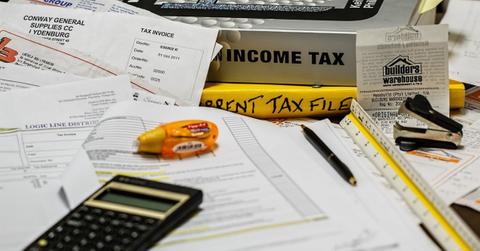House Democrats Want To End Backdoor Roth IRAs—Are They Still Allowed in 2021?
If your income is too high to contribute to a Roth IRA, a backdoor Roth IRA may be the solution. Are backdoor Roth IRAs still allowed in 2021?
Sept. 16 2021, Published 7:47 a.m. ET

While high-income individuals aren't allowed to directly contribute to a Roth IRA (individual retirement account), they can still participate in this popular retirement savings vehicle through a "backdoor" Roth IRA. However, that may soon not be the case—Congressional Democrats want to slam shut this tax loophole. Is a backdoor Roth IRA still allowed in 2021?
There are income restrictions on Roth contributions, but there are no limits on Roth conversions. You can earn as much money as you want, and you can still convert a traditional IRA to a Roth.
Roth IRA contribution limits for 2021
To contribute directly to a Roth IRA, your income must be below a threshold based on your tax filing status. For 2021, the government allows only those individuals with an adjusted gross income under $208,000 (married filing jointly) or $140,000 (single) to contribute to a Roth IRA. The main advantage of a Roth IRA is that your retirement withdrawals are tax-free.

What's a backdoor Roth IRA?
If your income exceeds the limit, a backdoor Roth IRA might be a good strategy for you. You contribute to a traditional IRA, then immediately convert the funds to a Roth IRA, pay taxes, and you're done. Even if you didn’t qualify to contribute to a Roth IRA, you could still enter through the backdoor, regardless of your income.
For 2021, the maximum IRA contribution limit is $6,000 per person ($7,000 if the account owner is 50 or older). So, if you want to create an account this year and subsequently convert it to a Roth IRA via the backdoor IRA method, that's the most you may contribute.

Is a backdoor Roth IRA allowed in 2021?
On Sep. 14, House Democrats proposed several changes to retirement accounts for people who have a high income. They want to prohibit individuals who earn over $400,000 per year from converting pre-tax retirement savings accounts to a Roth IRA. Most of the changes are expected to begin in 2022.
If the new law is approved, both the traditional IRA contribution step and the Roth conversion must be completed by the end of 2021 in order to do a backdoor Roth IRA for the year.
Backdoor Roth IRA taxes
Roth IRAs are only funded using after-tax money. So, if you deducted your traditional IRA contributions and subsequently converted your account to a backdoor Roth, you'll have to give up that tax deduction. When it’s time to submit your tax return, be prepared to pay income tax on funds you converted to a Roth.
How to set up a backdoor Roth IRA
In just a few simple steps, you can convert a traditional IRA to a Roth IRA:
• Contribute funds to a traditional IRA account, ensuring that your brokerage supports Roth conversions.
• Convert your contribution to a Roth IRA. Usually, this involves filling a simple form, which your brokerage may provide and process.
• Pay any taxes that are due.
Should you do a backdoor Roth IRA?
The backdoor Roth approach can be useful for transferring funds into a tax-free account. And with the possibility that income tax rates will rise in the future, putting as much money into Roth IRAs as possible now could pay off in the long run. However, they're not suitable for everyone.
Money converted from a traditional IRA to a Roth IRA is subject to the Roth five-year rule, which states that if you withdraw funds within five years, you may incur taxes and a 10 percent penalty. Also, the withdrawal from your traditional IRA might push you into a higher income tax bracket.
